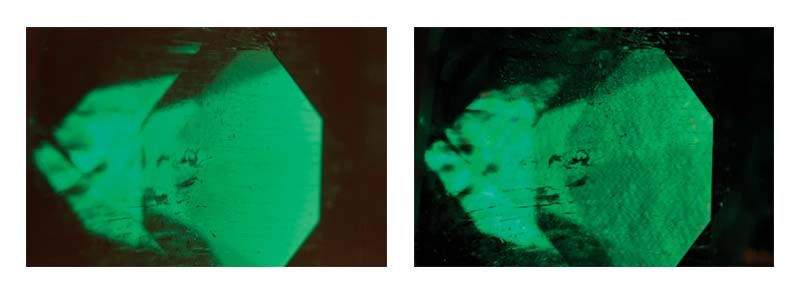Dust off your polariscope

As gemmology students, we were all exposed to the polariscope, and many of us still own one. We might even use it every once in a while, although I’ll confess it’s been well over a month since my last encounter with a standalone polariscope. On the other hand, I use my modified polarizers on a daily basis. The difference is I can also use my polarislides in conjunction with my microscope and the modifications allow me to use them for a variety of tests.
Classically, a polariscope is used to determine whether a stone is singly refractive (i.e. isotropic), doubly refractive (i.e. anisotropic), or an aggregate. It is also used to locate the optic axis. With the addition of a conoscope, wave retardation plate, and/or a quartz wedge, one may also determine a stone’s optic character, optic sign, and in the case of quartz, identify the ‘handedness.’ All this can be very useful information when identifying a loose gemstone; every gemmologist should know how to perform and interpret the tests. One of the ‘problems’ we as jewellery appraisers encounter when trying to make use of a polariscope is that we’re usually dealing with mounted gemstones and often with relatively small ones. The limited viewing area we’re typically afforded can make it difficult or impossible to correctly interpret the stone’s reaction to crossed polarizers. The solution is magnification.
Polarizing microscopes are specialized instruments most commonly found in a mineralogist’s laboratory; however, adapting a standard gemmological microscope to perform similarly isn’t difficult or expensive. Some people use polarizing filters designed for photography, others purchase polarizing film online or from other sources to create their own. If you choose to purchase photographic polarizers, be sure to use the linear variety, rather than circular polarizing filters. Circular polarizers are most commonly used for digital cameras and aren’t really suitable for our purposes.





